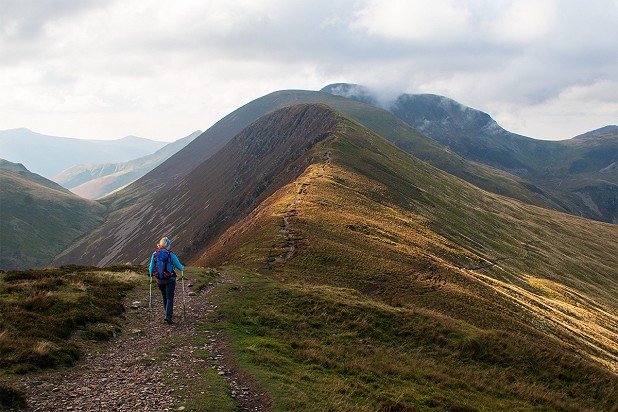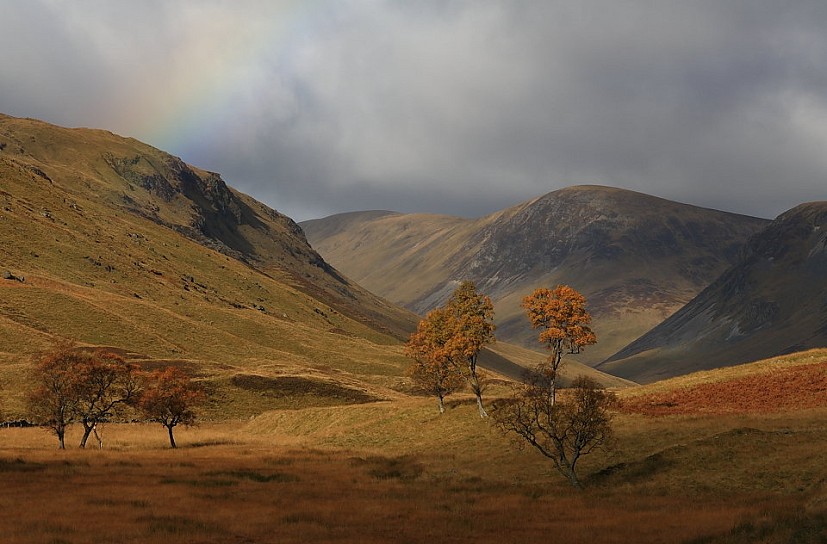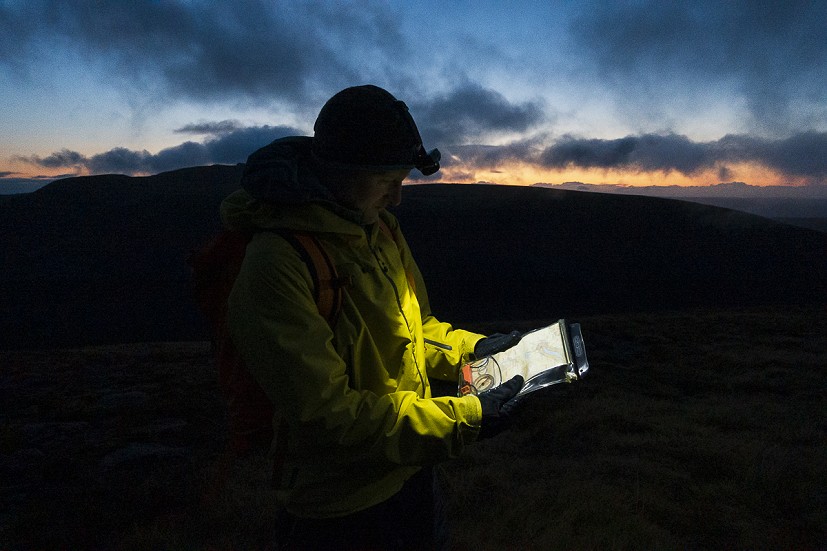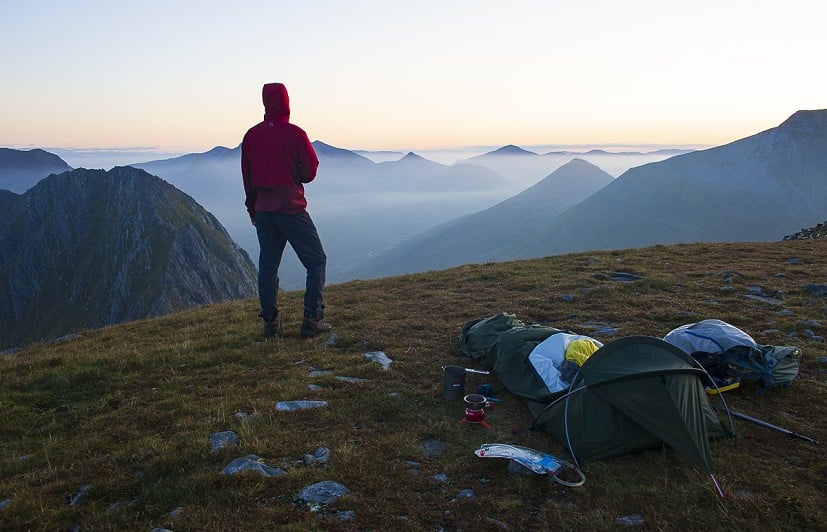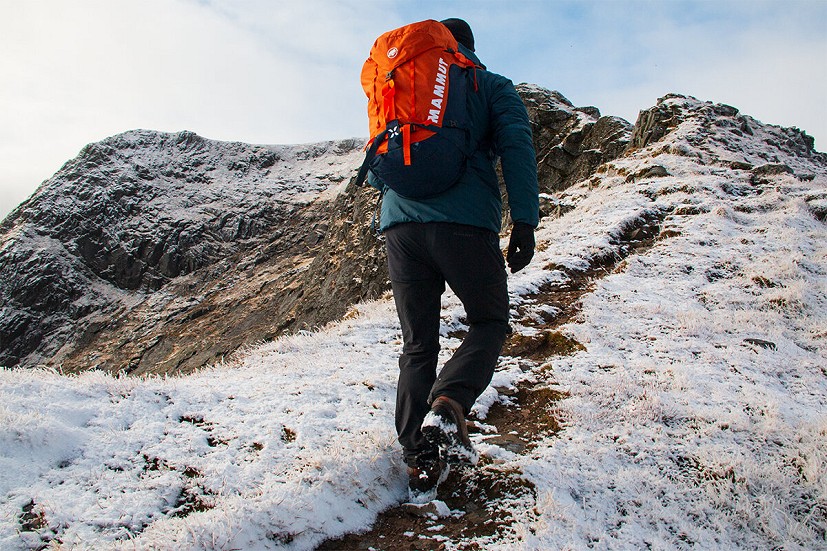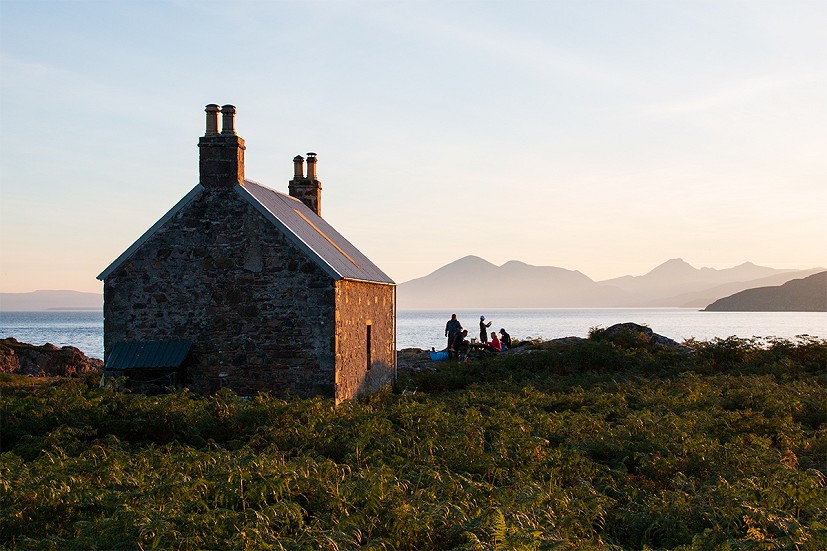Autumn Walking
The nights may be drawing in and the weather getting wilder, but between the wind and rain autumn can offer golden days of pure hillwalking pleasure. Summer's crowds have thinned, and with them went the midges and humidity, leaving the hills crisp, clear, and quiet. More than just a transition period taking us from trainers to crampons, the next few months of walking should be some of the best. But you'll need to sharpen up. Winter is just around the corner - it'll probably be hitting the summits any day - so now's the time to dig out warm clothing, add an extra headtorch, and tighten any skills grown slack over summer.
Think in technicolour
With trees on the turn and heather in bloom, sunny autumn days are a riot of colour. To make the most of it, pick a hill that starts and finishes in the woods. Natural broadleaf woodland may be thin on the ground on our sheep-nibbled and deer-ravaged uplands, but the pockets that remain really look their best in seasonal tones.
Combine the Derwent Fells with the woods of Borrowdale and Derwentwater; climb Snowdon or Yr Aran from Nant Gwynant; explore the rugged delights of the Rhinogydd from Cwm Bychan; try Ben Venue from Loch Katrine, or rope Ben Lomond into a long stretch of Loch Lomond's idyllic east shore; head into Ardgour via the oak woods of Ariundle...
Make light of it
Of course you'll have been carrying a just-in-case headtorch all summer, but unless you've been camping then there's a fair chance it's sat unused in your pack for months. Autumn's rapidly dwindling daylight hours change all that.
Whether you'd deliberately planned to start or finish in the dark, or whether it crept up on you by mistake, you'll be struggling to get far without light. If your summer torch was a lightweight it's now time to switch up to something with more oomph. Before leaving, ensure it's all working correctly, and the battery fully charged. Traditional advice was to carry spare batteries, but in these days of compact, powerful LED units you'll get a much better safety margin if you carry a spare torch. Excess weight? Only until you need it.
Beef up the clothing
Hope for the best, but prepare for the worst. Wind, rain, sleet, snow, sub-zero temperatures and near-zero visibility; while we could be describing a classically ironic July day on Ben Nevis, the dreich factor clearly increases massively as winter approaches.
Just last month you may have been sweating in shorts, but now you'll probably be thinking of long sleeved thermals and overtrousers. Now's the time for the sun hat and midge net to translate into a warm beanie, a buff, and some light or midweight gloves. It may be prudent to swap lightweight waterproofs for something with a bit more heft:
It's definitely wise to exchange thin summer insulation for a warmer duvet jacket, whether you intend to wear it or pack it just in case. Given autumn's tendency towards wet rather than frozen conditions, a synthetic insulated jacket may well be preferable to a down-filled one:
Wash and reproof your waterproofs
If you're like me, you probably won't have bothered maintaining shell layers over the summer; but since things are taking a turn for the wetter and windier, now's the time to give those waterproofs a wash and re-proof so they'll be performing that their best when you really need them:
We're gonna need a bigger pack
Look at all that bulky clothing. Think about seasonal staples like torches, additional food, a group shelter, and perhaps a flask. Is your mini summer running pack going to cut it? Mine won't. Unless the weather is exceptional, autumn tends to demand more carrying capacity and a more supportive back system to handle the weight. Between August's warmth and November's snow, a rucksack of around 30 litres should do it. By the time autumn is shading into winter proper a full-sized mountain pack closer to 40 litres will be coming into its own, but if you lack space or budget for a different pack for every season, a bigger one will cover everything until next spring.
Brush up on navigation
It's darker, wilder, wetter and colder, and the potential consequences of getting misplaced are growing less pleasant by the day. Come winter, basic proficiency with navigation needs to be well-drilled. Despite the rise of mapping apps - and we all use them, there's no sense being proud - it's still essential to be able to get around safely using just a map, a compass, and some core skills. Use the autumn months to sharpen up.
Camping? Maybe think about a bothy
Some of us value bothies as an end in themselves, while others avoid these festering mouse pits where possible.
But if you're keen to sleep out, then there comes a point in the year - and it's probably soon - when four solid walls and a more or less watertight roof may begin to look more appealing than a storm-tossed tent. In iffy autumn weather, a decent bothy (they do exist) makes an ideal base for a hill round. Bring friends, a dram, and something to burn, and you may even enjoy it.
Try a bit of foraging
Who doesn't love food for free? From hills to hedgerows, the late summer/early autumn berry season is in full swing, providing plenty of opportunities to graze as you go.
Check deer stalking information
While it's not a thing in the Brecon Beacons or the Pennines (sheep ate all the deer), between late summer and midwinter, deer stalking is a big consideration in the Scottish hills.
Whatever your feelings about an elitist industry built around shooting things for fun while presiding over the ecological degradation of huge swathes of our upland ecology, stalking is still a fact of life across most of the highlands. Walkers and stalkers are best kept apart, and our right to responsible access is predicated on not getting in the line of fire. While some estates are generally hostile to public access, and others seem to have little interest in informing walkers of their activities, many land managers are only too happy to advise. Information is often posted at popular access points, and the most helpful estates also subscribe to the Heading for the Scottish Hills service.


